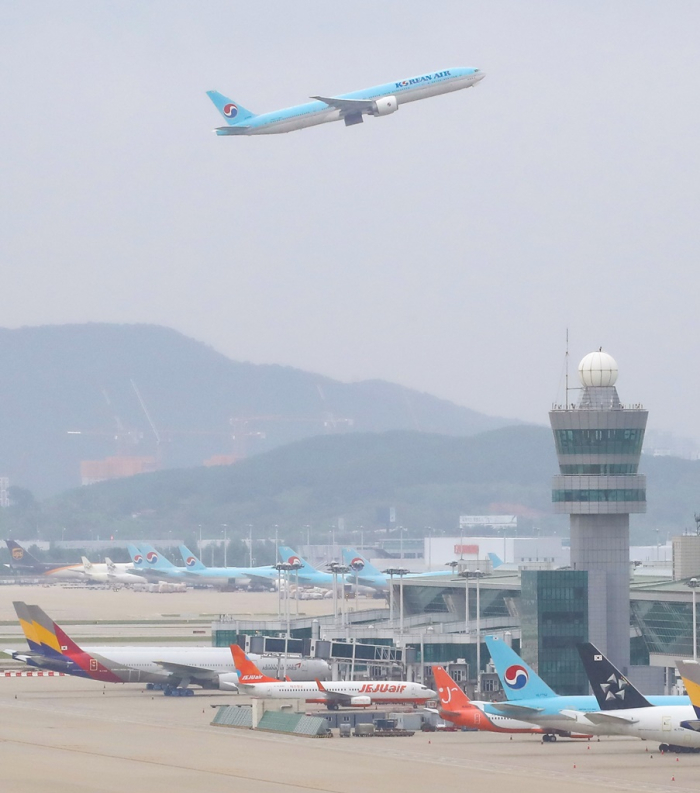Travel & Leisure
Travel bubble triples KoreansŌĆÖ trips to Saipan
Korea, Singapore to allow quarantine-free from Nov. 15; LCCs earnings are unlikely to get immediate support
By Oct 10, 2021 (Gmt+09:00)
2
Min read
Most Read
Samsung shifts to emergency mode with 6-day work week for executives


Alibaba eyes 1st investment in Korean e-commerce platform


S.Korea's LS Materials set to boost earnings ahead of IPO process


Blackstone signs over $1 bn deal with MBK for 1st exit in Korea


NPS loses $1.2 bn in local stocks in Q1 on weak battery shares



A travel bubble between South Korea and Saipan more than tripled visits of residents in the Asian country to the main island in the Northern Mariana island chain. South Koreans are also allowed to visit Singapore without quarantine from the next month, helping a recovery in the aviation and tourism industries.
The number of passengers from the Incheon International Airport to Saipan totaled 452 in the week from Oct. 3 to Oct. 9, according to data from South KoreaŌĆÖs government on Oct. 10. That would mark a rapid recovery, given 198 of visitors to the island during the fourth week of September when a three-day Chuseok holidays fell.
In September, a total of 1,081 passengers left for Saipan, more than a triple of 319 in August.
South Korea signed its first travel bubble agreement with Saipan in June since the outbreak of the COVID-19. Travel bubbles are agreements between two or more countries to open their borders to travel without strict quarantines.
Kensington Hotel Saipan where foreign tourists are quarantined for five days after arrival is almost fully booked. The Saipan government is known to be considering use of three or four more hotels for quarantines. Asiana Airlines, Jeju Air Co. and TŌĆÖway Air, which operate the Incheon-Saipan route once a week, are mulling increasing flights depending on the hotel situations.
SINGAPORE
South Korean government also agreed with Singapore to allow people vaccinated against the COVID-19 to travel between the two countries without quarantine from Nov. 15. Singapore is a preferred destination in Southeast Asia among South Koreans due to the city-stateŌĆÖs good hygiene and security.
Such agreements may support the aviation industry, but it is expected to take some time for South Korean budget airlines to improve their earnings. Demand for key international flights has yet to recover, while those low-cost carriers (LCCs) are still facing cut-throat competition in the domestic flight market. Southeast Asia also suffered a spread in the Delta variant of COVID-19.
ŌĆ£Nobody knows how long they have to suffer from losses,ŌĆØ said an LCC source. ŌĆ£But I feel like the end of the tunnel is getting closer little by little. A travel bubble with a minimal quarantine, like the one with Singapore, will definitely help.ŌĆØ
Jeju Air, South KoreaŌĆÖs top LCC, was expected to report 64.9 billion won ($54.3 million) in an operating loss in the third quarter, while Jin Air Co., the budget airline of Korean Air Lines Co., was forecast to log a 43 billion won loss, ┬Āaccording to financial data company FnGuide Inc. On the other hand, Korean AirŌĆÖs operating profit and revenue were predicted to surge 2,107% and 30% to 167.8 billion won and 2 trillion won, respectively.
Write to Jeong Min Nam at peux@hankyung.com
Jongwoo Cheon edited this article.
More to Read
Comment 0
LOG IN







